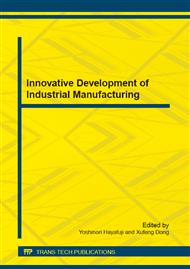p.105
p.110
p.114
p.119
p.127
p.134
p.141
p.149
p.157
Excitation and Emission Wavelength Comparison Study for Bacterial Aerosol Identification Based on Intrinsic Fluorescence
Abstract:
Background: The rapid and efficient identification of bacterial aerosol become important in clinical application, public health, and manufacturing increasingly. Laser-induced-fluorescence is an important method for identifying bacteria from environmental aerosol. This method is real-time, can operate 24-hour without pretreatment, and even remotely. Objective: Choosing the optimal excitation and emission wavelength and designing an appropriate analysis apparatus fulfill identification of bacterial aerosol. Method: First, fluorescence spectral data of five different strains of bacteria (S.aureus, E.coli, Bacillus subtilis, salmonella, Vibrio Parahaemolyticus) and three types of disruptors (pollen, leave powder, cloth fiber) were obtained by Three-dimensional fluorescent spectrometer. Second, the original spectral data was preprocessed and analyzed in light of common laser wavelength. Last, the optimal excitation and emission wavelength was chosen based on the balance of identification performance and fabricating cost. Result: Experiments showed that choosing ex:266nm/em:354nm and ex:337nm/em:394nm as ex/em wavelength can meet the requirement to identify bacterial aerosol specifically. Furthermore, the 337nm/394nm wavelength had more practical value. Conclusion: Choosing 337nm wavelength laser as excitation light inducing intrinsic the fluorophores within bacterial aerosol and receiving emission fluorescence with 394nm bandpass light filter can differentiate bacteria from disruptors in environmental aerosol efficiently.
Info:
Periodical:
Pages:
127-133
Citation:
Online since:
November 2014
Authors:
Price:
Сopyright:
© 2015 Trans Tech Publications Ltd. All Rights Reserved
Share:
Citation:


